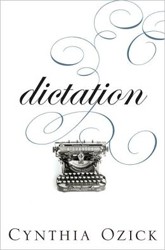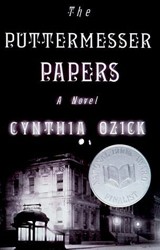Upstate New York and the outer Bronx of the 1930’s, the settings of Cynthia Ozick’s Heir to the Glimmering World, are much like this novel’s characters. Past their prosperity and aspirations, the gritty towns near Albany, many bearing proud classic names, maintain allegiance to vanished purpose, shopworn elegance, and, in the face of all this, a thread of hope and dignity.
The story opens when the narrator, Rose Meadows, answers an ad in the Albany Star. The job description is vague — assistant— but promises relocation to New York City with Professor Rudolf Mitwisser and his family: his disoriented wife, a professor who worked with Erwin Schrödinger in Germany; three unruly boys Americanized as Hank, Bill and Jerry; and a toddler tended by her older sister, who manages the brood. Rose, orphaned in her teens, has little to leave behind — her disreputable dead father, a distant cousin now hopelessly entranced by his tough-talking Communist lover, and no prospects.
The Mitwissers escaped Germany at the invitation of a small Quaker college in Albany that mistook the professor’s specialty as the Charaismites, not the Karaites, an obscure Jewish sect, and offered him a job. He and his family are rescued from this unhappy situation by James A’Bair. James is heir to vast royalties from the books in which his despised and distant father portrayed him in Christopher Robin-like stories that trapped James in a permanent and disabling childhood he will never escape.
Ozick brings everyone together in an isolated little house in the Bronx. Mitwisser unpacks his books and dictates to Rose; the boys run wild; Elsa Mitwisser withdraws; and James and Anneliese, the older daughter, eventually decamp together. Out of nowhere, Rose’s distant cousin Bertram turns up, broke and broken. He finds his calling in the household, and at once it buzzes with efficiency and organization, fueled by envelopes of cash that James dispatches now and then as he and Anneliese tour upstate New York in an ever-downward spiral.
Readers who come to this novel from Ozick’s Puttermesser Papers and The Shawl will find a different voice here, although one still rich and imaginative. The publisher describes the novel as paying homage to the great 19th-century writers, among them Dickens. And in the sprawling family, the recurring intervention of coincidence, and the cast of mismatched characters — including a memorable cameo by a displaced scholar of Hinduism now a tailor in Brooklyn— we see the resemblance. Much as we learn about Ozick’s characters, however, we do not feel with them, except, perhaps, Rose. They are the vehicle the novel rides. Circumstance, not motivation, drives the action. The story charges ahead, never faltering, and ends with a twist that offers hope and a future to almost everyone — the vision of the glimmering world.
Maron L. Waxman, retired editorial director, special projects, at the American Museum of Natural History, was also an editorial director at HarperCollins and Book-of-the-Month Club.




